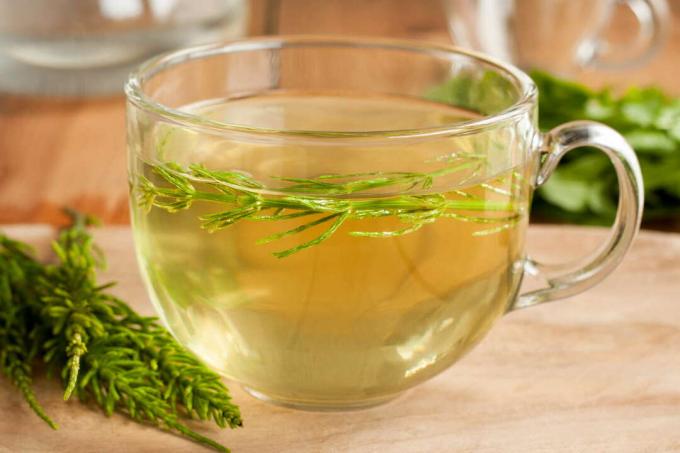Eliminate powdery mildew: how to recognize, prevent and control the non-toxic fungus. Information on home remedies (baking powder, milk) and pesticides.

contents
- Symptoms: How to recognize powdery mildew on roses, vines and other plants
- Powdery mildew: are infested fruits poisonous or still edible?
- Prevent powdery mildew
- Fight powdery mildew chemically? You can also use milk and baking powder organically
Symptoms: How to recognize powdery mildew on roses, vines and other plants
The first symptoms of both downy mildew and powdery mildew can appear as early as spring. Powdery mildew forms a mealy coating on the leaves of the host plant. As a rule, the coating occurs on the upper side of the leaf, but the underside of the leaf can also be attacked. In addition to the leaves, fruits, shoots, and flowers can also show the same symptoms. Unfortunately, almost every crop can become ill with powdery mildew, the infestation in grapevines and cucumber crops is particularly serious, and cherry laurel can also be affected.


Powdery mildew: are infested fruits poisonous or still edible?
Powdery mildew (Erysiphaceae) belongs to the tubular mushrooms and includes a large number of species. Each species is specific and can only attack one species of host plants. This means that powdery mildew that attacks a tomato is not able to infect a cucumber or other plant species. Incidentally, the same applies in almost all cases to downy mildew (Peronosporaceae), which is actually not a real mushroom at all. It belongs to the dummy mushrooms and is actually much more closely related to brown algae and diatoms.
While powdery mildew can grow in dry weather, downy mildew needs high humidity and wet leaves to spread. Incidentally, the following applies to both fungal diseases: Infested leaves and fruits are not really poisonous because of the powdery mildew fungi. Consumption is still not recommended, as the mushrooms can sometimes trigger severe allergies.
Prevent powdery mildew
Although powdery mildew and downy mildew grow in different weather conditions, there are some similarities in terms of prevention. On the one hand, the vegetation should not be planted too densely so that the leaves can dry off quickly. Powdery mildew does not need wet leaves to attack the plant, but the formation of dew can encourage the outbreak of the disease. Another influencing factor is sunlight. On the one hand, it strengthens the vitality of the plant and at the same time has a growth-inhibiting effect on powdery mildew. A sunny location is therefore always preferable. Of course, the light requirements of your plants must always be taken into account.

So that powdery mildew does not break out in the first place, balanced fertilization is very important. Drafts and dew formation should be prevented as much as possible, especially with greenhouse crops. In some plants, such as the apple blossom, heather dream and wild rose varieties, there is resistance to the pathogen. There are also differences with grapevines. European grapevines are generally very susceptible to powdery mildew, while many American wild species show resistance.
Fight powdery mildew chemically? You can also use milk and baking powder organically
If an infestation by downy mildew or powdery mildew is identified, action should be taken quickly. Downy mildew in particular can form many new spores on the infected leaves, which infect other parts of the plant. Fortunately, both diseases are biologically treatable even after the outbreak.
Opinions are divided about a treatment with milk. Some hobby gardeners swear by spray treatment with milk (1 part milk: 9 parts water), other gardeners have unfortunately not achieved any success with it. In any case, the procedure does not harm your plants and therefore an attempt at least cannot do any harm. A home remedy that is guaranteed to work when used correctly is baking soda. More precisely, it is the component potassium hydrogen carbonate (synonym: potassium bicarbonate). To do this, prepare a spray mixture from one part of baking powder and add 99 parts of water (corresponds to 1% baking powder in the water). The affected parts of the plant are then well sprayed with it. Better results may be achieved with pure potassium hydrogen carbonate, as baking soda often contains some other substances. Incidentally, potassium hydrogen carbonate is a completely harmless substance.
Do you have problems with powdery mildew on your roses? As Prevent and control powdery mildew on roses, is discussed in more detail in this article.
